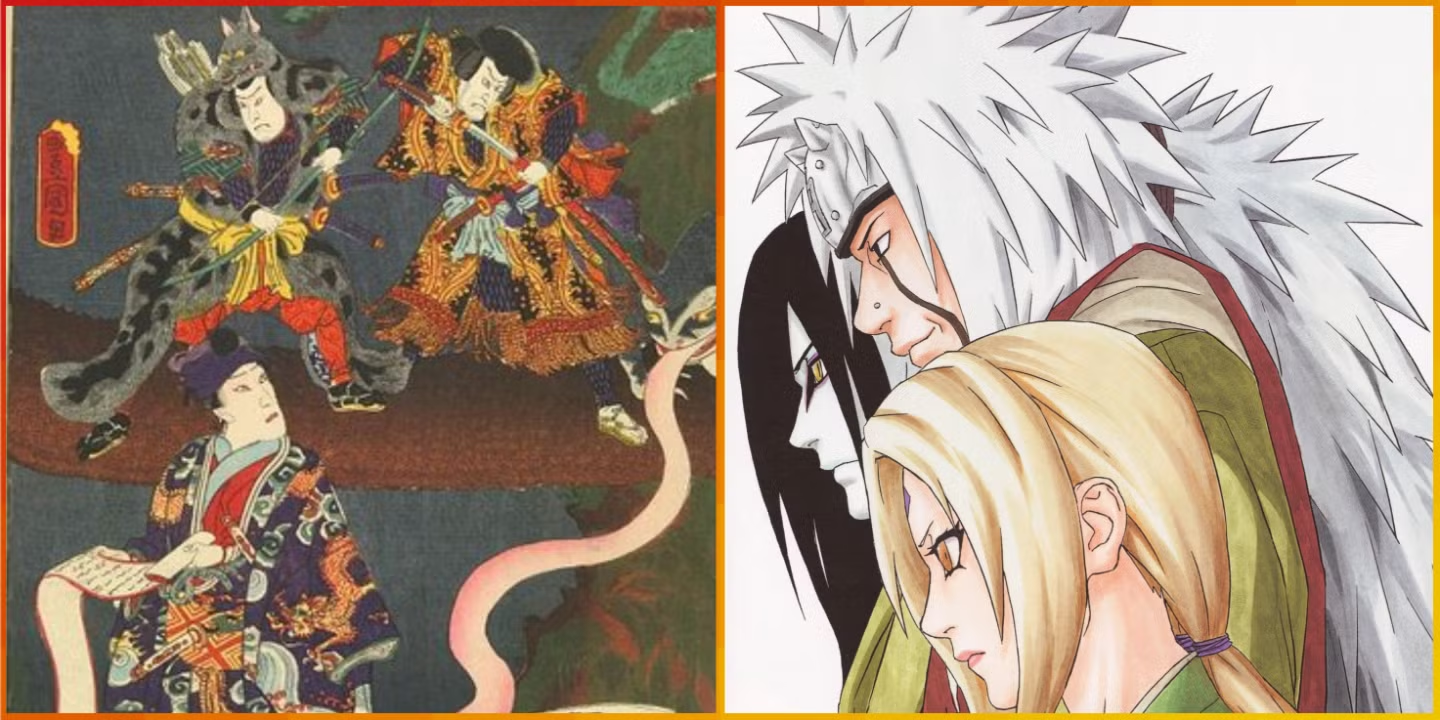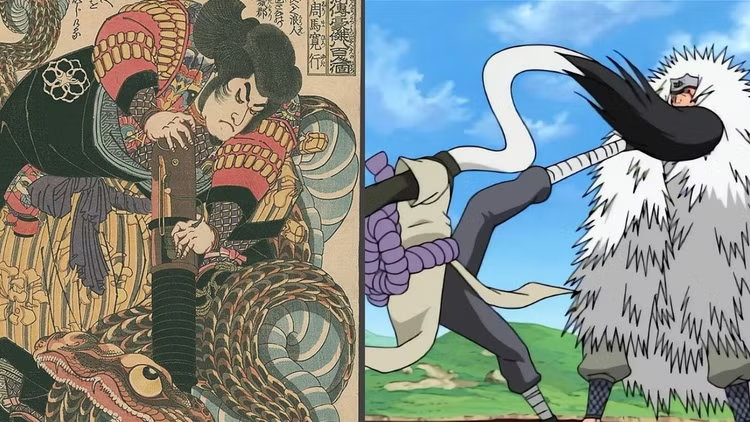
Discover the intricate connection between Japanese legends and the ninja world of Naruto

Naruto It’s more than just an anime series; It’s a vast universe where Japanese lore and legends come to life through characters. With more than 720 episodes and countless characters, Masashi Kishimoto’s work has managed to weave modern stories with the rich fabric of Japanese folklore. As we explore the world of Naruto, we discover that many of its characters are inspired by figures and stories from centuries ago. This fusion of tradition and modernity not only enriches the narrative, but also offers a new dimension to the fan experience.
The wisdom of the Sannin
The Sannin, a legendary trio within the series, resemble the Sannin of Japanese folklore. In Narutothese iconic characters, Jiraiya, Tsunade and Orochimaru, have overcome unimaginable challenges and their story dates back to the opera The story of the brave Jiraiyawhere heroes of the past face demons and evil forces. In folklore, Jiraiya is a ninja capable of summoning frogs, while in the series his heritage and powers are reflected in his relationship with Naruto and his fight against adversity.
The meaning of toads in Japanese tradition
The toads of Mount Myoboku, in Narutothey are creatures with a rich history of folklore. These entities are not only powerful, but also summon the legends of the Ogama, known for their magical and combat abilities. In the original story, Jiraiya meets an immortal toad who teaches him the arts of toad magic. This bond with toads isn’t just a matter of power; It is a connection with history and ancestral knowledge.
The mischievous gods of wind and thunder
The characters of Fujin Yes Raijin From Naruto They are inspired by the wind and thunder deities of Japanese mythology. Both are known for their chaotic nature and ability to unleash terror. In the series, the legendary brothers are criminals who wreak havoc in Konoha, a clear nod to how even their folkloric counterparts were feared for their destructive power. This duality of malice and strength resonates in how Kishimoto portrays these characters, demonstrating that, even in chaos, there is a lesson in the responsibility of power.
A parallel between anger and revenge
The story of Kidomaruone of the Four Sounds of Orochimaru, finds its roots in the legend of Kidomaru the Oni-Boy. Both characters, motivated by anger and the desire for revenge, end up being consumed by their own demons. This connection between hatred and fate is a recurring theme in Japanese folklore, showing how the pursuit of justice can lead to self-destruction. In Kidomaru’s case, his tragic fate illustrates how anger can lead even the most skilled warriors off their path.
The Terror of Kuchisake-Onna
The figure of Kakuzua renegade shinobi, is inspired by the terrifying Kuchisake-Onna, known as the Woman with the Torn Mouth. Both characters instill fear in those who cross their path, using their chilling appearance as a means of intimidation. In Japanese tradition, Kuchisake-Onna becomes a warning about the dangers of judging appearances, a theme that also resonates with Kakuzu’s nature as a tragic villain who seeks immortality at any cost.
The influence of Journey to the West
Him Four tailsknown as Son Gokushares similarities with Sun Wukongthe Monkey King of Journey to the West. Both characters are powerful and possess supernatural abilities, representing the struggle between good and evil. Son Goku, with his near-infinite energy and superhuman strength, captures the essence of the hero of legend, who also faces cosmic challenges. This parallel reinforces the idea that the struggle for justice can manifest itself in multiple ways over time.


The Seven Swordsmen
Los Seven Swordsmen of the Mist They are a representation of the Shichinin Misakia group of ghosts in Japanese folklore. This connection shows how the characters of Naruto They can reflect fears and cultural lessons, highlighting the value of teamwork and loyalty in a world full of chaos and betrayal. Each swordsman, with his unique sword and special abilities, resembles the yokai that lurk in the shadows, adding a layer of mystery and depth to his narrative.
The connection between love and destiny
The relationship between Minato Yes Kushina is based on a Japanese parable about the red thread of destiny, which unites soul mates. This narrative of fated love resonates throughout the story, showing how love can flourish even in the darkest moments. Their everlasting bond, symbolized by Kushina’s red hair, reminds fans that true love can overcome any adversity.
Heroines with strength and compassion
The figure of Tsunade In Naruto is inspired by Yoshitsunea legendary Japanese warrior known for his healing abilities and courage. Both figures are not only powerful in combat, but also show compassion towards others, becoming leaders in their respective worlds. This parallel highlights the importance of inner strength and the ability to heal others, a lesson that resonates deeply in Tsunade’s story.
The art of manipulation
Kuramathe Nine-Tailed Fox, takes its form from KitsuneFox spirits from Japanese folklore. Known for their intelligence and magical powers, Kitsune represent a duality of nature: they can be protectors or deceivers. This complexity is reflected in Kurama, who, despite his destructive power, forms a deep bond with Naruto, proving that even the most fearsome creatures can find redemption.
The hero who challenges evil
Finally, Jiraiyathe beloved teacher and mentor, is inspired by the heroic figure of Jiraiya Goketsu Monogatari. This character is a symbol of the fight against evil, reflecting the eternal struggle between light and darkness. Jiraiya, with his dedication and sacrifice, represents the ideals of heroism and friendship, embodying the spirit of folklore stories that have endured throughout history.


A series rich in folklore
The characters of Naruto They are not just the fruit of Masashi Kishimoto’s imagination; They are a reflection of ancient legends and teachings of Japanese folklore. This rich connection between history and modern storytelling allows viewers to not only enjoy action and adventure, but also explore the deeper meanings behind each character. By understanding the cultural roots of these characters, fans will be able to further appreciate the complexity and beauty of this beloved universe.